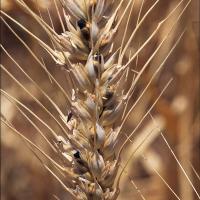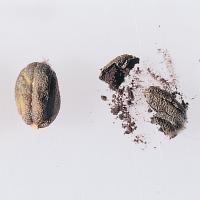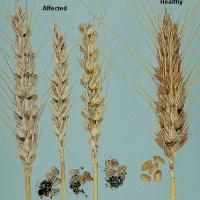Diagnosing common bunt of wheat
A fungal disease affecting wheat seed. Although rare, common bunt is the most serious of the smut diseases due to the zero tolerance for bunt at grain receival points. Bunt spores can be carried on seed, contaminated machinery and in soil. Wheat is the only host for this disease.
What to look for
- Cloudy masses of black spores can be present during harvesting.
Paddock
- Plants slightly stunted.
- Glumes on seed heads spread apart.
- Kernels infected with grey-brown balls of spores.
- Crushed seed has a stinky fish smell.
Plant
Where did it come from?

Contaminated soil

Contaminated seed
- Common bunt is seed and soil borne and only affects wheat. Most West Australian (WA) wheat varieties do not have adequate resistance to the disease.
- Bunt spores can be carried in contaminated machinery.
Management strategies

Seed dressing fungicide

Rotation

Resistant varieties
- Important not to re-sow infected seed.
- Fungicidal seed dressing.
- Soil-borne bunt will diminish over time. A one-year rotation is mandatory where common bunt has been diagnosed.
- If possible sow a wheat variety with moderate common bunt resistance in the year following the rotation.
Further information
Page last updated: Thursday, 16 April 2015 - 10:36am




